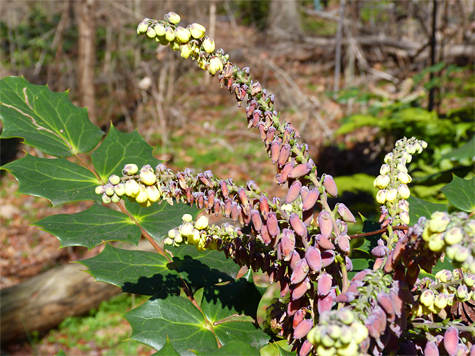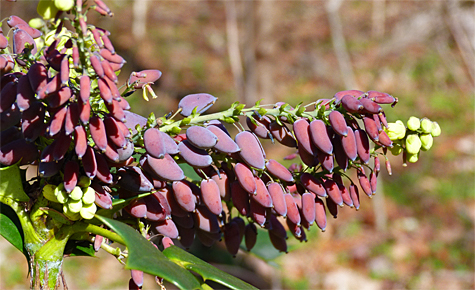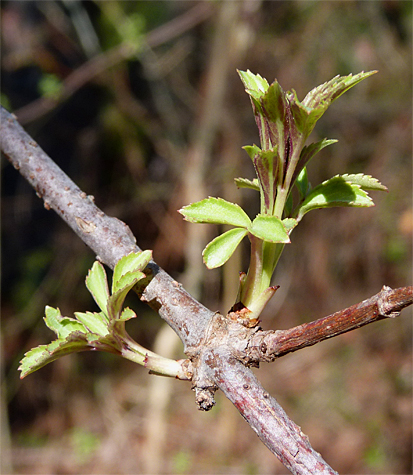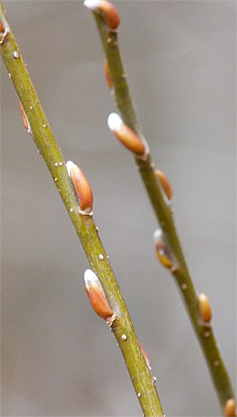
Thanks to the mild temperatures this winter, the Mahonia (Mahonia sp.), Grape-holly, or whatever it is that you prefer to call it, on the Dinosaur Trail has been in bloom continuously since the fall. It now has berries where once, bright yellow flowers lured honey bees, various flies, and ants to perform the pollination duties. These plants should provide a good crop of berries for the birds this year.

Common Elderberry (Sambucus canadensis) is showing its first sprouts of the season.


The buds on Silky Willow (Salix sericea) are beginning to awaken from their winter slumber. This small tree or shrub is more northern in distribution than the abundant Black Willows that grow just about everywhere you look here in our Wetlands. The silky variety is rare on the coastal plain, more common here in the Piedmont and Mountains.
Silky Willow blooms very early here at the Museum and these trees should be in their glory by next month (March). It’s been very mild and things are moving rather quickly here in the Piedmont, but we may yet get a blast of coldness to slow things down a bit.
I expect that we’ll have to wait and see what the rest of winter brings us. Until then, enjoy the weather, and the early floral happenings.